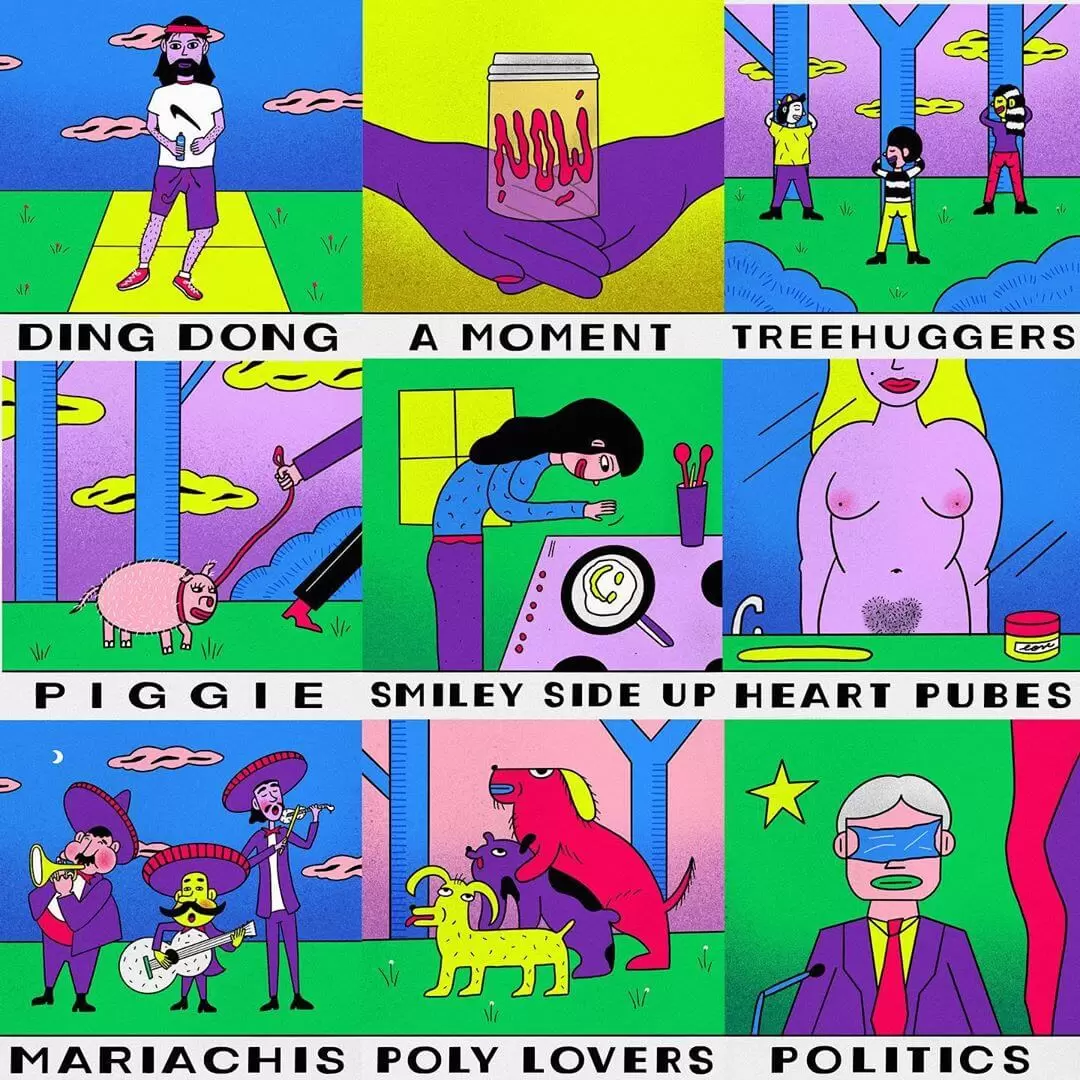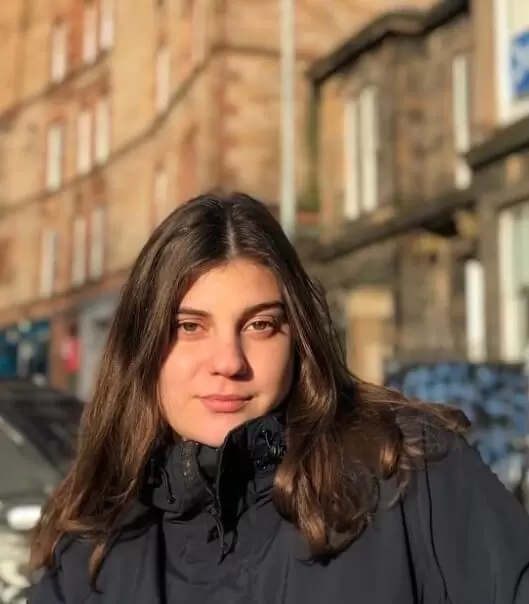Angelica Liv is an emerging visual artist, muralist and illustrator from Colombia. She is interested in storytelling and creating worlds that capture what is impossible in contemporary contexts but can be created through art.
She is influenced by post-colonialist history in an effort to decolonize artistic practices. She is very interested in primitive culture as she believes they can express core emotions and universal human values of life. For example, she has reproduced masks in her work produced in Japan.
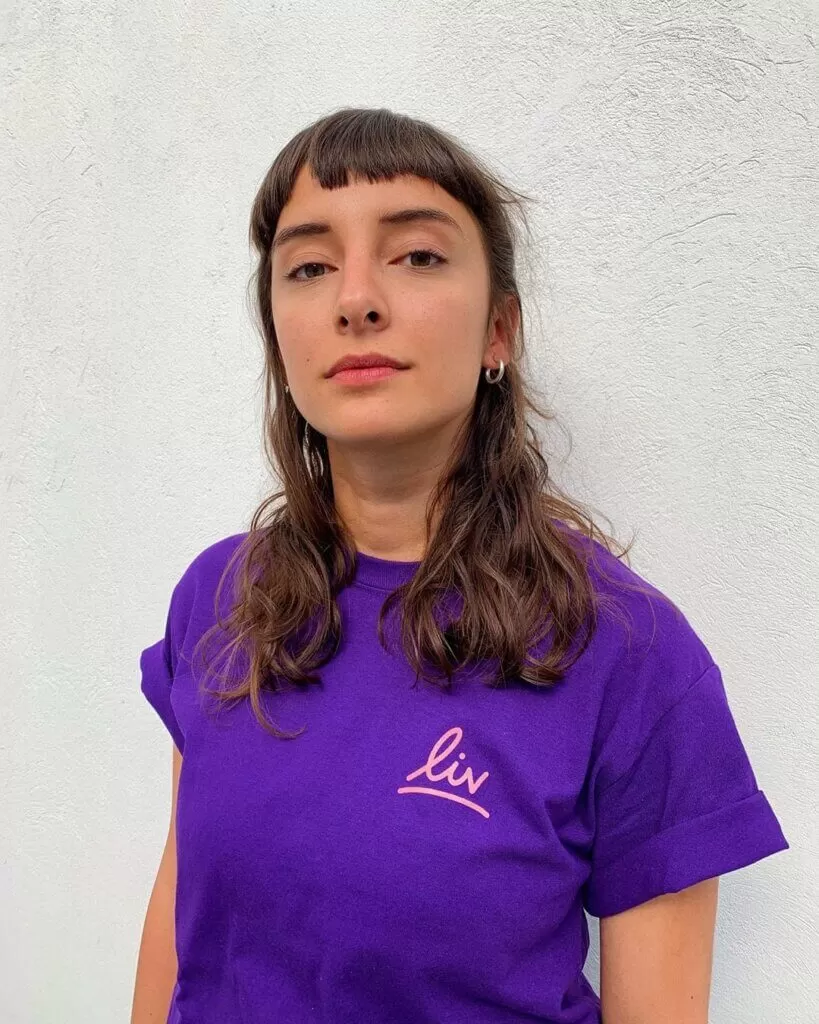
I am inspired by social struggles, primarily through a post-colonialist lens
Angelica Liv
Angelica celebrates the mixtures of cultures which have developed in Colombia during colonialism. The celebration of the interconnectedness between cultures is a way to divest internalized and oppressive hierarchies. Angelica believes that art has a substantial social value, and the artist must be responsible for what they produce.
Art must prompt dialogue and reflection in the viewer, depicting how the social struggle is felt rather than how it is seen. In this interview, we delve into the contrasting relationship Angelica has towards technology and how it has influenced her attitude towards social media and her distancing from photography.
Q: First things first, why do you do what you do?
Angelica Liv: My work is a place for me where a lot of interests meet; it gives me a space to exercise freedom and experiment a type of fantasy world, I play with opposite, characters and colours that have no connection with reality. It represents something that right now in the world is not possible.
Q: Second, What is your inspiration?
Angelica Liv: I am very interested in storytelling, even though I don’t do a lot of writing. History also inspires me in general, especially in primitive culture: Ancient Egypt and older cultures of expression. It inspires me to use art as a way of dealing with life.
I see how long ago people have been using art as a medium and as a way to reflect, process and humanize social problems in ways we cannot put in words right now. Everything around storytelling inspires me, more than looking visually at other works.
I am inspired by social struggles, primarily through a post-colonialist lens. Colombia was built and constructed on the idea of a colony of black slaves, Spanish and Portuguese people and indigenous people. I approached this through travelling to areas where this triad of cultures is more evident than in the capital of Bogotà, such as in the coastal areas. This also connects to my passion for history.
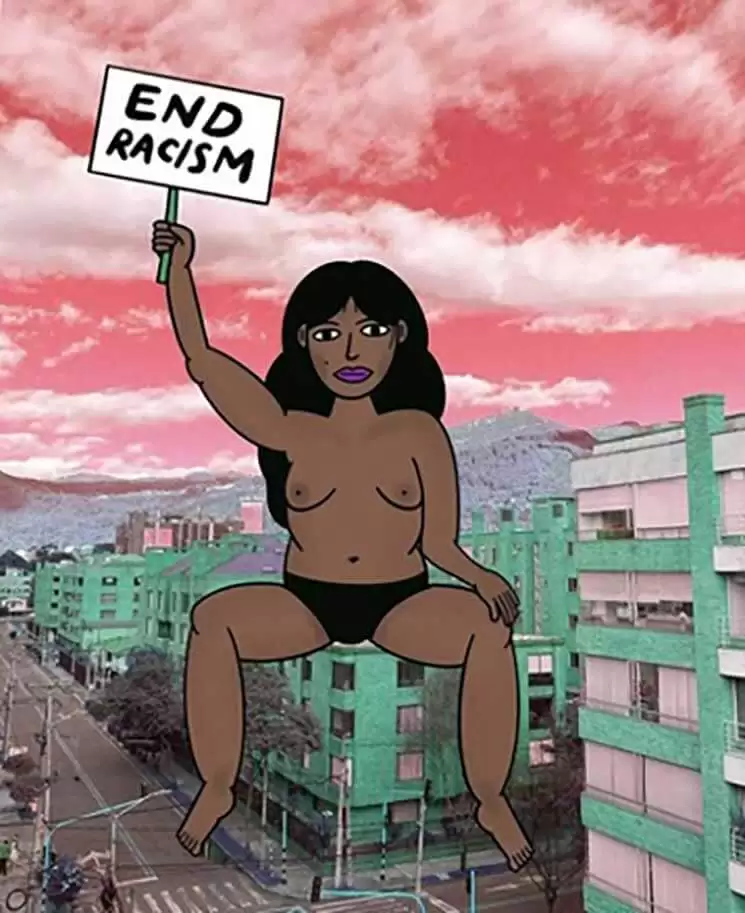
I am interested in the mix of graphic art that happened as a result of a mixture of cultures. Social struggles also involve gender and sexual violence and racism. I show my intimate approach toward what the people around me and I have lived, throughout images. I want to show how the social struggle might feel like instead of how you see it from outside.
Q: What is your creative process when you’re creating?
Angelica Liv: In the last years, my creative process occurs every day. I work where I live because I travel a lot, as I finished University two years ago. This makes my creative process an integral part of my life. I never have a schedule, and I will work super early in the morning and always give space in my mind to develop characters and ideas.
It’s chaotic and spontaneous. I absorb anything that comes to my mind. The new thing is that I’m trying digital illustration rather than on paper, wall or wood. My creative process is divided between quick digital artwork and more technical work on paper or wood—the creative process shifts between the medium and what is around me.
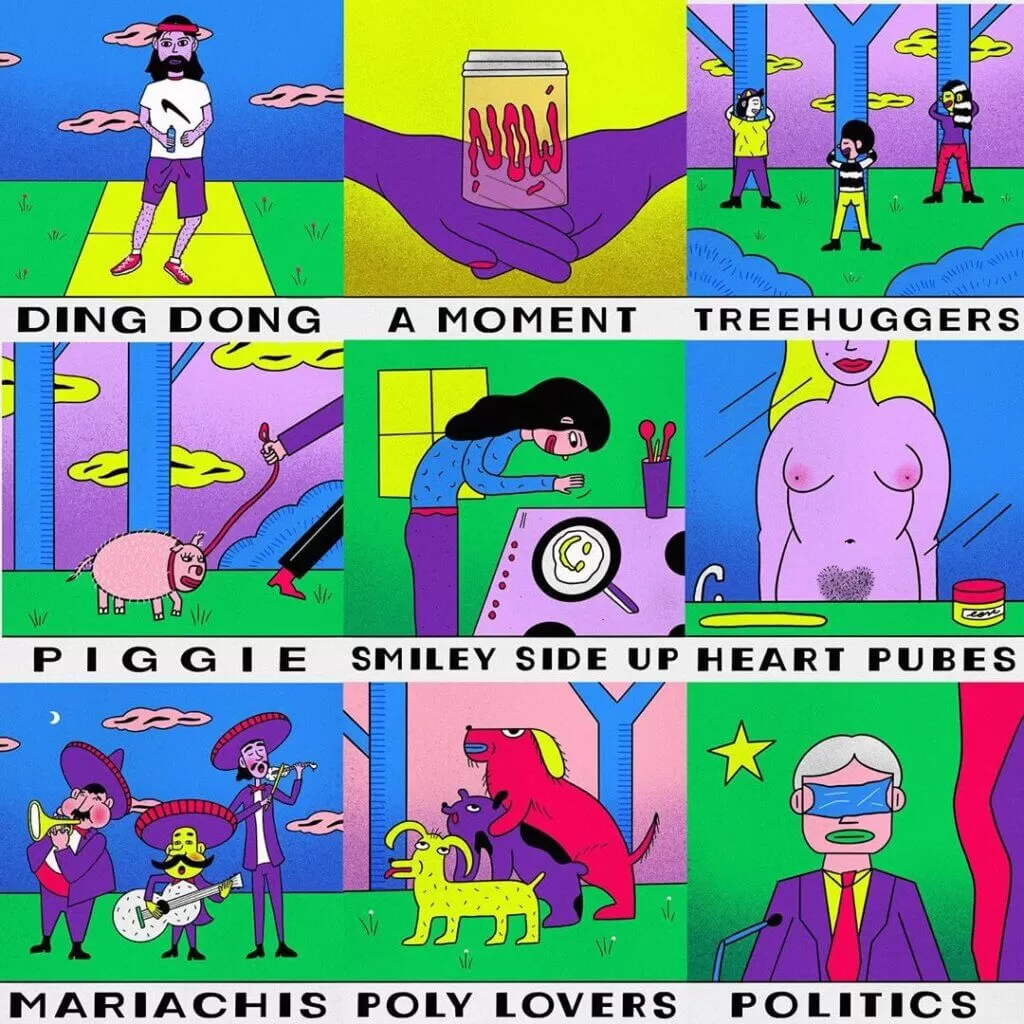
Q: Which is your preferred surface for working on?
Angelica Liv: Wood is my favourite, but also Colombian cardboard, which is full of fibers and thus has a particular thick and absorbent texture.
Q: What would you say is an integral part to the work of an Artist?
Angelica Liv: It’s all about balance between responsibility and freedom. Every piece you make is for yourself, for a group of people or to state something. Artists have the ability to social exercise through their work, it’s not just a good created in a factory. Art will touch and be in communication with other people, therefore there is a level of responsibility.
The way you communicate is the way of having responsibility towards what you are doing, even responsibility towards yourself and your artistic decisions like the use of colors, mediums and the way you create a bridge with yourself. An artist should not be an artist for capital reasons, but as a way to exercise freedom of speech and expression. You should manage to break the status quo, your rules and others’ rules.

Q: What artist inspires you the most?
Angelica Liv: I do constant research, and it continuously changes sculpture, masks, animation, illustrations. I have a spontaneous approach towards other works as both my grandmothers were self-taught artists. They didn’t have a lot of academic teaching, but if they work was very intuitive.
Even though I love Keith Haring or old Japanese wood makers’ work, I am more interested in self-taught mechanisms of the creative process and feeling people’s work but not sticking to just an artist. It’s more about exploring the creative process of making art.
Q: What is the creative process behind the development of characters in your illustrations?
Angelica Liv: I studied the emotion of anger, background research about emotional state, as it is very primitive in people. This connects to something very old. I made a series of paintings on fabrics during my stay in Japan. In the Japanese context, you are not allowed to express anger; therefore, it was hard for them to understand how western people can show so much anger.
I wanted my art to be a way of exchanging and exploring the feeling of anger through the shape of the faces and the type of lines in the characters depicted. I work a lot with outlines and bold lines, it gives a lot the personality to the character. In the project, anger was away for connecting with an emotion everyone feels by showing it through a character. It’s not just the word anger, but its a lived emotions.
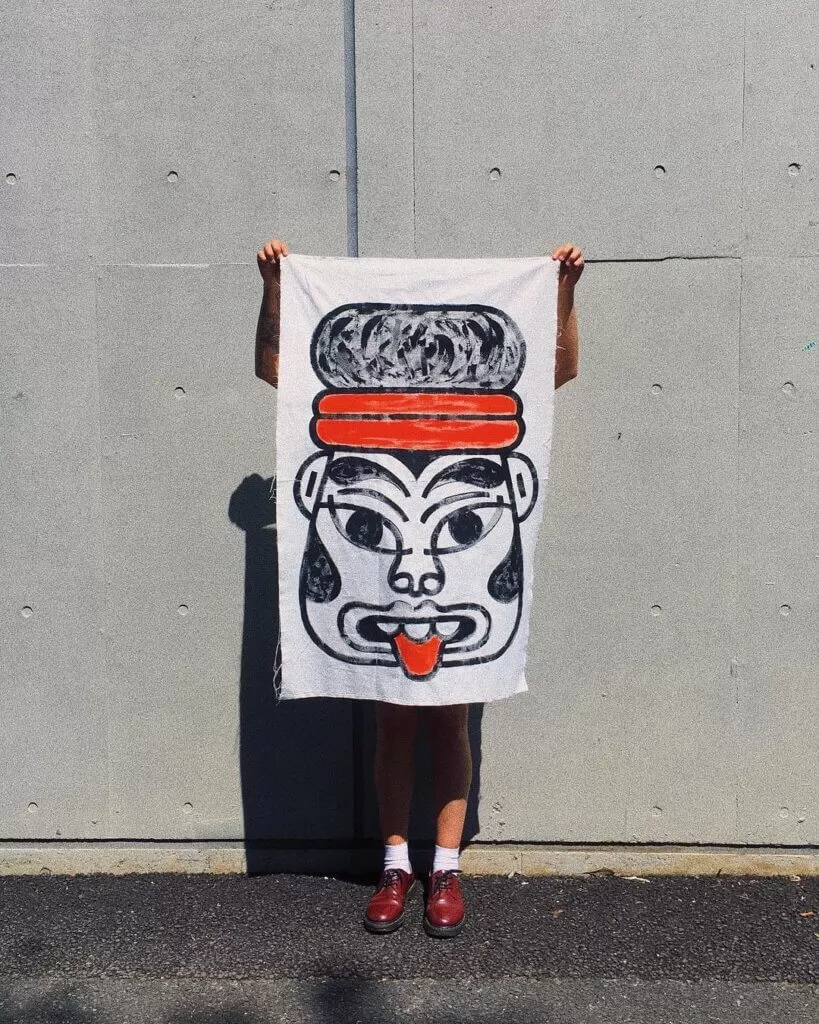
Q: How do you know when a piece is finished?
Angelica Liv: This is an intuitive part of the work. It is defined by the intention I have when I sit to work. When I do digital work, I already know the type of message I want to transmit. But when I paint, it’s a lot about the colour: when the colours are right, the piece is finished. There must be a colour balance that I feel attracted to for the piece to be ready.
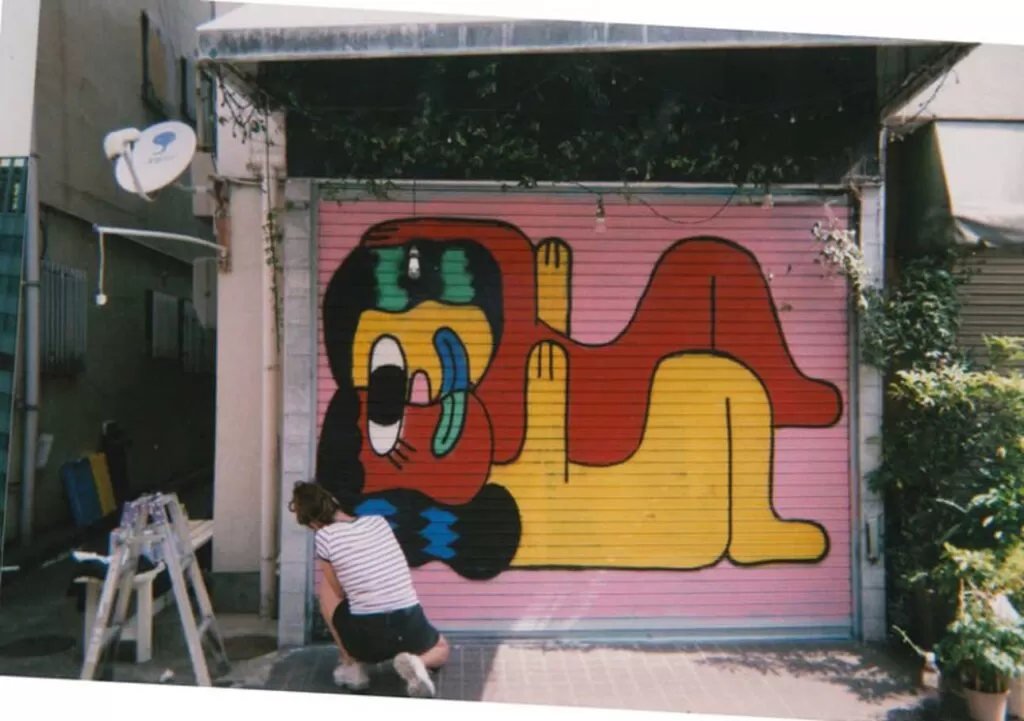
Q: What is your favourite piece from your collection?
Angelica Liv: The Japanese series, a recent digital comic I made called Healed by the Girl published on Curated by girls and the mural work I created in Mexico and Japan.
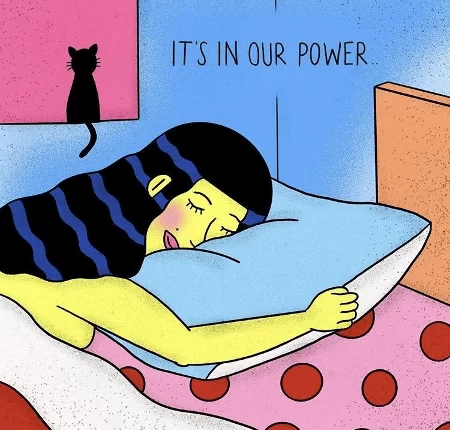
Q: How did you feel when you did your first solo exhibition?
Angelica Liv: I had my first solo exhibition in Bogotà when I was 20 years old. It consisted of documentary and portrait photography showing anti-capitalist and queer movements social struggles. It was very big for me as it was very early in my career.
I gave a lot of tour visits to kids in school. I felt very connected to the subjects I portrayed, as I visited a lot of independent houses and houses for queer meetings which really allows me to understand the problematics of a community that some people would never be able to see. Bogotà is very divided and I was able to give a shared space to the community.
Q: What is the most rewarding thing for you about being a part of the Art Industry?
Angelica Liv: I am still discovering the way my work will fit into the so-called Art Industry. I developed most of my career and worked in Berlin. Even if the city is very artistic there are very isolated scenes of art as well, not just one type of possible art, meanwhile, in other cities there are all sorts of galleries that only show one mainstream kind of art.
I am still trying to find out which part of the art industry I want to get involved in as I am transitioning between being an illustrator and as an artist and painter, as they are quite different. For me, bringing art to the public is about instigating dialogue and reflection rather than having people look up to me. In Berlin, Art is less hierarchical as in other cities, and it allowed me to develop this aspect.
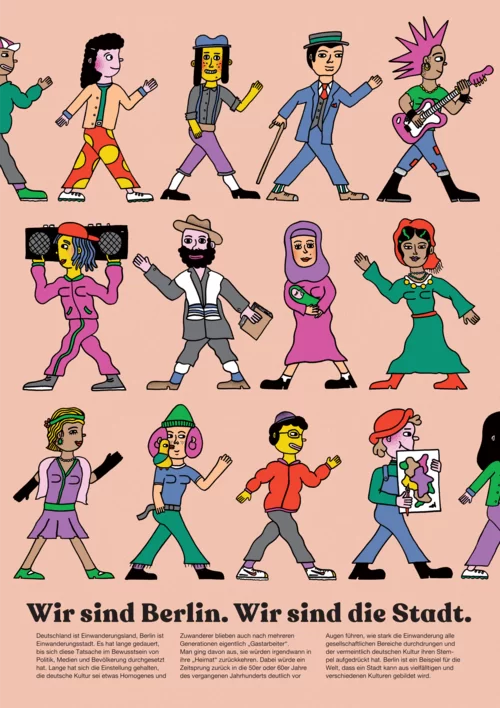
Q: Is there anything that worries you about how social media is affecting the promotion of artists?
Angelica Liv: I am apprehensive about social media’s main aim turning to the number of followers and number of likes. Social Media is more about brands rather than artists. It’s about popularity.
Even if as an artist, you want to be independent, you also rely a lot on commercial work and doing collaborations. However, the monetization through social Media gets some of the authenticity; some people like something only because it’s popular rather than if they connect to it.
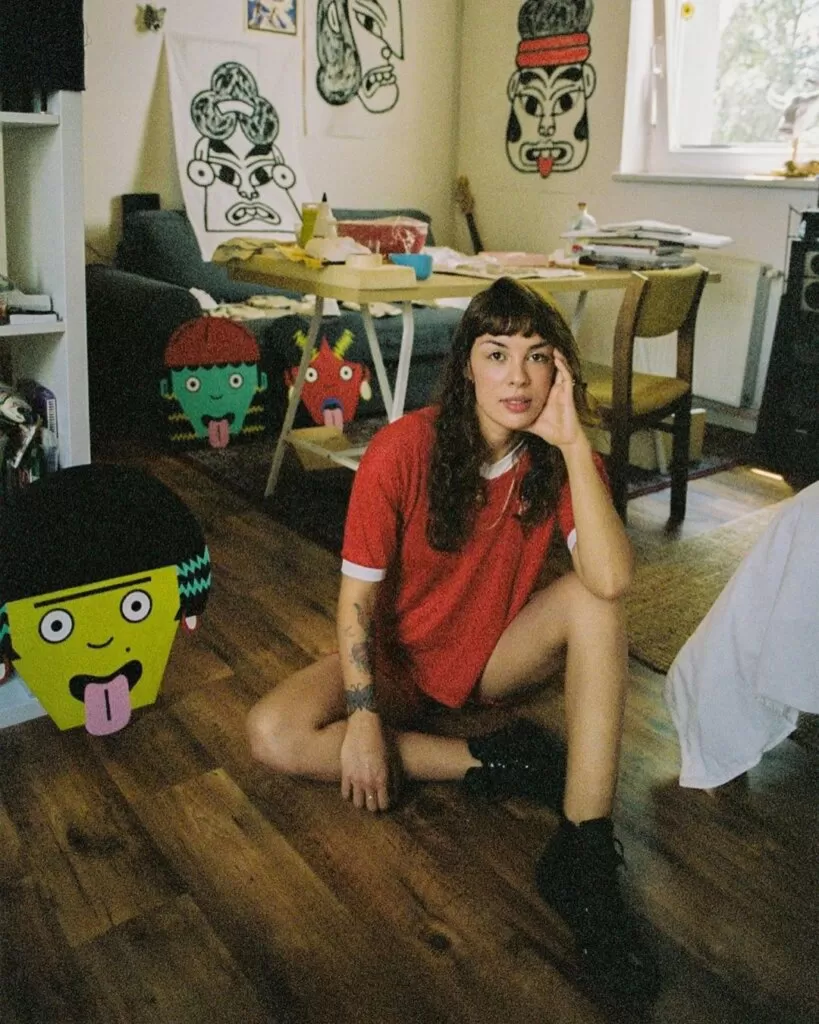
Q: In your opinion, do you have any advice for artists on how to manage their social media image? Or does it even need managing?
Angelica Liv: When artists start to use social media in their work, they should use it as a learning tool and platform to not be afraid of showing your work. You can learn flexibility, to put yourself out there.
Social media can force you to have a posting deadline and therefore enforce a creating rhythm in you. It is intuitive as well, as the more one uses social media, the more one develops a way of using it that is good for them. It’s a tool like any other, like a pencil.
Q: Are there any places where you feel Art and Technology really shouldn’t overlap?
Angelica Liv: I began focusing on illustration and painting as an artistic practice rather than photography because I was tired of using all my gear of cameras and computers. The whole technological part of it was very dull. I wanted to work on my ideas and not be dependent on technology. I was deciding to use machines less as was a massive part of my career.
I wanted to go back to understanding colour through paper, to exercise the drawing of lines with my hand, to make notes and compositions in the most basic way possible. I think there is a part of the expression that is universal: the connection between you, your hand, your eye, which is more about the energy in yourself rather than in machines.
https://www.instagram.com/angelicaliv/
©2020 Angelica Liv


